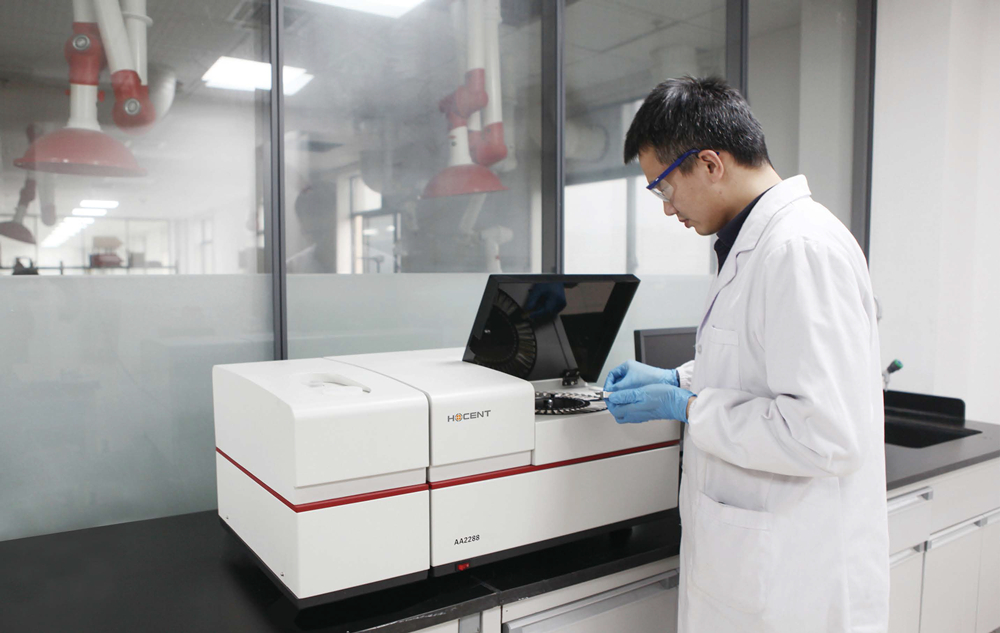
Lately, CKIC, in partnering up the Institute of Quality Standard and Testing Technology for Agro-products of CAAS (IQSTAP·CAAS), made it to the quantitative analysis of cadmium in solid samples of grain by successfully combining electrothermal vaporization (ETV) and atomic absorption spectrometry (AAS), the result of which is smoothly promoted and commodified with great economic returns and social effect. During Spring Festival, the article detailing on this achievement is invited to be published on the Journal of Analytical Atomic Spectrometry (JAAS), which belongs to the Royal Society of Chemistry.

In atomic spectroscopy, ETV - an effective method in feeding solid samples - can team up with atomic fluorescence spectrometry (AFS), AAS, inductively coupled plasma atomic emission spectrometry (ICP-OES), inductively soupled plasma mass spectrometry (ICP-MS) to achieve direct analysis of various elements. However, in reality, due to complex sample matrix, multiple problems of ETV are in dire need of solution, such as volatile element, matrix interference and analytical sensitivity.
Cadmium is nowadays one of the heavy metals that have drew the most attentions in food analysis in China. This patented technology makes possible vaporization and transmission of cadmium of solid samples with high efficiency, resolving the problem of matrix interference. The small-sized delicate atomic absorption spectrometer adopted in this project is able to accurately test the content of cadmium with a minimum limit as low as 0.001mg/kg. The technology is now not only successfully patented in China but also in America, Japan and EU through PCT.
Cadmium is nowadays one of the heavy metals that have drew the most attentions in food analysis in China. This patented technology makes possible vaporization and transmission of cadmium of solid samples with high efficiency, resolving the problem of matrix interference. The small-sized delicate atomic absorption spectrometer adopted in this project is able to accurately test the content of cadmium with a minimum limit as low as 0.001mg/kg. The technology is now not only successfully patented in China but also in America, Japan and EU through PCT.

Cadmium analyzer of CKIC is produced basing on this technology. It can directly test cadmium content in grain without high-pressure gas source or chemical preparation. It is of great pleasure that portable cadmium analyzer - EA2288 has been developed from existing AA2288 Automatic Cadmium Analyzer, bringing the efficiency of cadmium determination to a much higher level. Right now Hunan province in central China, a place with serious cadmium contamination, has become the home for more than 100 units of the product.
This project is supported by the National Natural Science Fund of China, the Key Research and Development Program of Hunan Province 2020SK2128 and the Agricultural Science and Technology Innovation Program of CAAS.
This project is supported by the National Natural Science Fund of China, the Key Research and Development Program of Hunan Province 2020SK2128 and the Agricultural Science and Technology Innovation Program of CAAS.
Full artical is available at: https://pubs.rsc.org/en/content/articlelanding/2021/JA/D0JA00387E#!divAbstract
没有评论:
发表评论